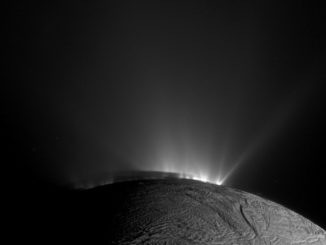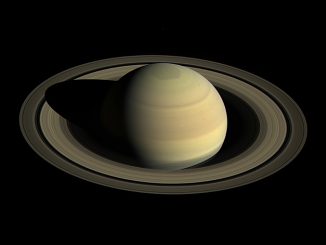
NASA/ESA/ASI Cassini spacecraft


Saturn’s moon Dione harbours a subsurface ocean
A subsurface ocean lies deep within Saturn’s moon Dione, according to new data from the Cassini mission. Two other moons of Saturn, Titan and Enceladus, are already known to hide global oceans beneath their icy crusts. Researchers believe that Dione’s crust floats on an ocean several tens of kilometres deep located 100 kilometres below the surface.

Countdown begins for Cassini’s final plunge into Saturn
After more than 12 years studying Saturn, its rings and moons, NASA’s Cassini spacecraft has entered the final year of its epic voyage. The Grand Finale will come on 15 September 2017 as Cassini dives into Saturn’s cloud tops, where friction with the atmosphere will cause the spacecraft to burn up like a meteor.

Barely bisected rings
Saturn’s shadow stretched beyond the edge of its rings for many years after the NASA/ESA/ASI Cassini spacecraft first arrived at Saturn, casting an ever-lengthening shadow that reached its maximum extent at the planet’s 2009 equinox. This image captured the moment in 2015 when the shrinking shadow just barely reached across the entire main ring system.

Saturn’s seasonal shadows
The shadow of Saturn’s globe on the rings, which stretched across all of the rings earlier in the Cassini spacecraft’s mission, now barely makes it past the Cassini Division. The changing length of the globe’s shadow marks the passing of the seasons on Saturn. As the planet nears its northern-hemisphere solstice in May 2017, the shadow will get even shorter.

Saturn’s moon Enceladus and its paper-thin crust
Researchers have used data collected by the Cassini spacecraft to build a computer simulation of Saturn’s icy ocean moon Enceladus that includes the thickness of the ice crust. At its south poles, huge geysers of water jet into space. These come from the ocean depths and suggest that the ice there must be relatively thin for this to happen.
